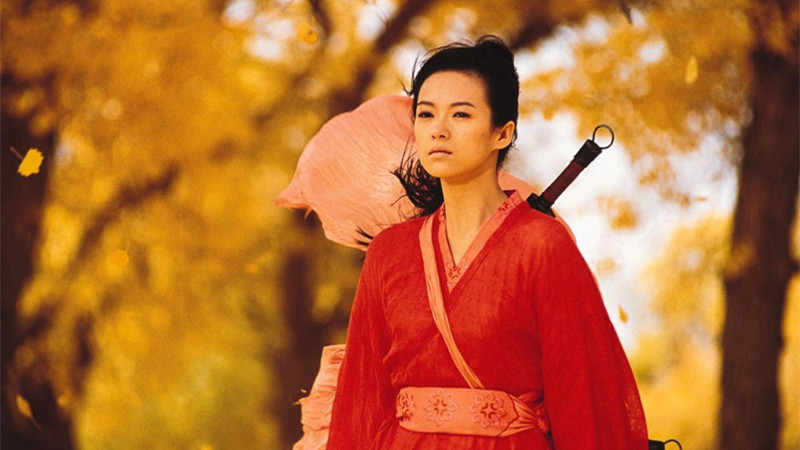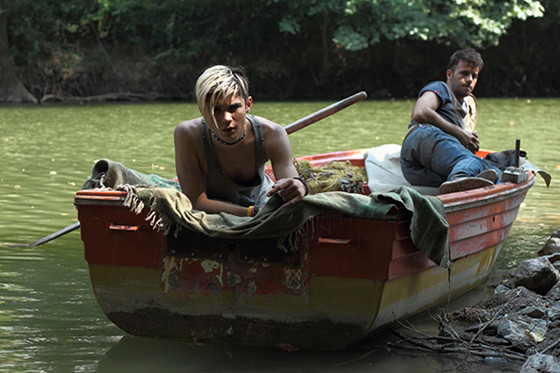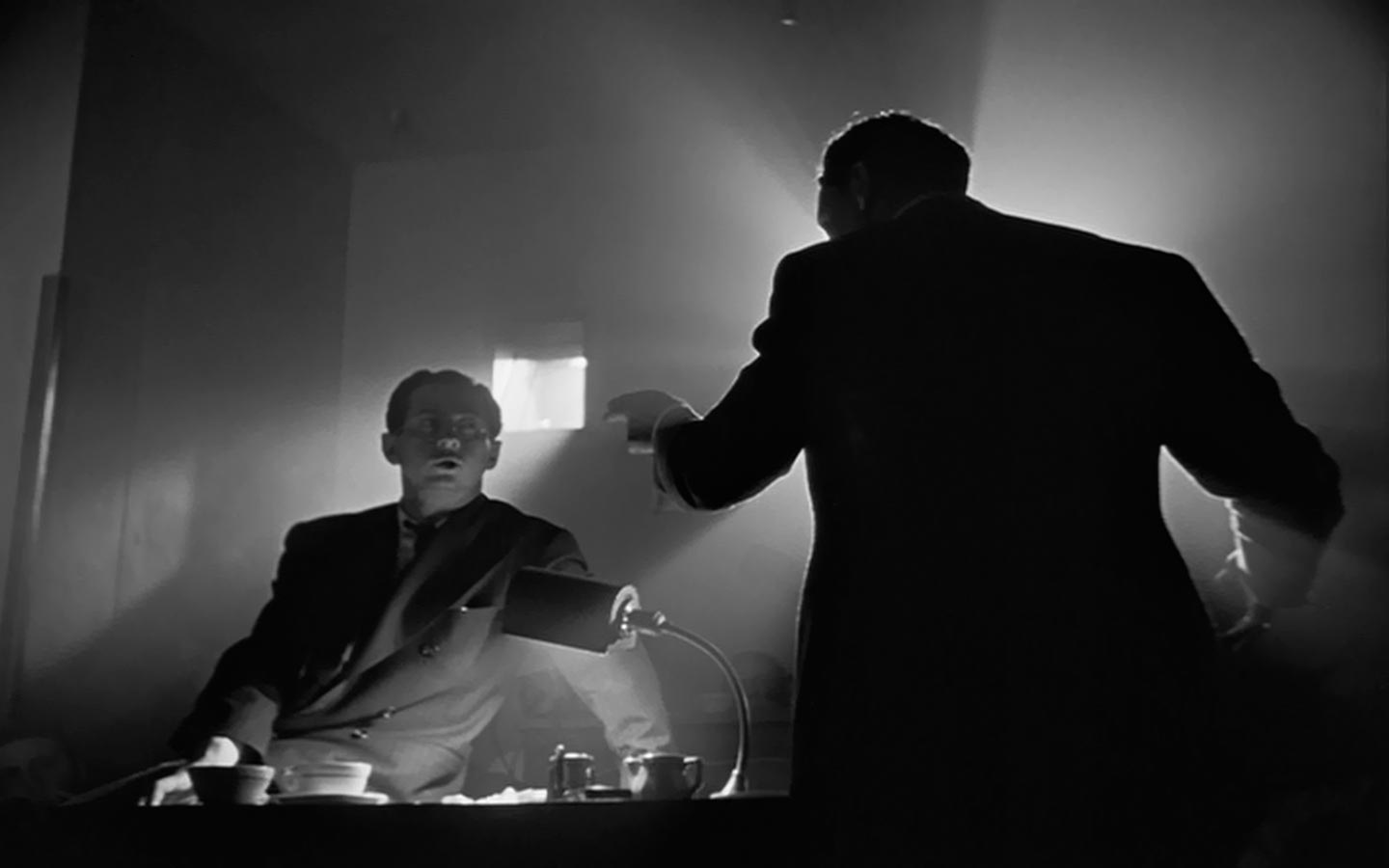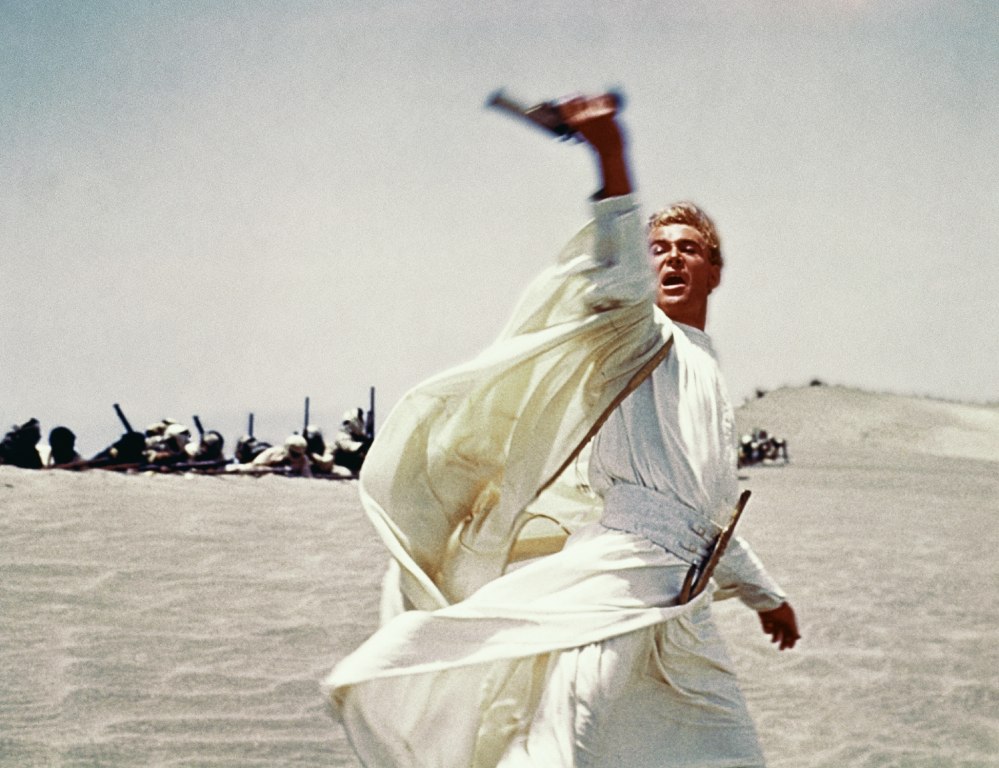6. Hero
Cinematographer: Christopher Doyle

Another masterpiece delivered by the precision and consistency of Christopher Doyle’s camera under the direction of Chinese cinema titan Zhang Yimou. Yimou’s “Hero” is probably his best work and it is the absolute definition of what one would call iconic. Certainly one of the best genre defining films of wuxia, the traditional Chinese martial-arts fiction, “Hero” is cinematically one of the jewels of the 21st century.
“Hero” not only received universal and time-transcending acclaim for its overall articulation and meticulousness, but is also considered a visual odyssey of color. Aside the epic of its theme and orchestration, “Hero” is radical because in a sense it set a trend with its intense color, which is not commonly encountered in action films where color is less frequently used and there is a recurrent preference for the muted palette.
However, “Hero” uses saturated and vivid colors for both nature and costumes, which complement by contrasting the surroundings. Its influence was manifested in many of the following similar ouvres, such as in Ang Lee’s “Crouching Tiger, Hidden Dragon.”The film is built around an elaborate plot with loads of historical elements and rich action sequences.
King of Qin (Daoming Chen) is determined to dominate China. His most notorious adversaries are Broken Sword (Tony Leung) , Flying Snow (Maggie Cheung) and Sky (Donnie Yen). Qin promises fortune and fame to those who hunt down and defeat his would-be assassins. Ten years later, a man named Nameless (Jet Li) claims to have succeeded. However, upon meeting King Qin, he realizes that the ordeal is more complex than that.
7. Inherent Vice
Cinematographer: Robert Elswit

Not a masterpiece at a directorial level or at any other, but can anyone deny that Paul Thomas Anderson has style? Can anyone deny that in Inherent Vice he does it better than in any one of his films? Perhaps, “The Master” competes with “Inherent Vice”, since it contains some pretty beautiful and original shots- it is certainly superior as a film in its entirety- but its overall vibe does abide to the rules that a film depicting post World War II America should abide.
And Inherent Vice, well despite its multiple script potholes and flaws is its own thing when it comes to style. And as Paul Thomas Anderson suggested in the film’s defense, it isn’t about unravelling the mystery but going down the rabbit hole and this is definitely achieved.
Based on Thomas Pynchon’s novel of the same name, the film takes place in the early 1970s and is equipped with the equivalent glam, psychedelic & hippie paraphernalia. The film follows Doc Sportello (Joaquin Phoenix) a self-proclaimed private investigator and the three cases he is tasked with, separate cases with a common denominator. Only few of the plethora of mysteries that are created during the film have been solved by the end of it.
The story is only an excuse to meet the films odd and groovy characters who spread information that contradicts the appearances and the claims of the rest of the characters under the umbrella of the grander conspiracy theory present in the story.
What is certain is that the production design and shooting of Inherent Vice is meticulous, beautiful and successfully gives the film an exclusive vibe.
8. Xenia
Cinematographer: Helene Louvart

As Panos Koutras himself proclaims his films can only be classified as queer-punk. And the brightest example of that is his 2014 Xenia. Eye popping and colorful, with disco vibe Xenia follows the two brothers Danny ( Kostas Nikouli) and Odysseas ( Nikos Gelia) who after the death of their mother, an Albanian singer, are in search of their greek father, who is their only chance of avoiding deportation.
They embark on a road trip, hoping to track down their father and being granted Greek citizenship. Xenia is abundant with directorial tricks and treats has a unique visual approach, which makes the film fun and resourceful.
9. Citizen Kane
Cinematography: Gregg Toland

Citizen Kane could not be absent from this list. It cannot be absent of any list concerning visual style and cinematography because it is the holy grail of inventiveness concerning both. Orson Wells and Gregg Todd do some first-time kind of shoots in Citizen Kane which became established and widely used to this day. Such is the depth focus in the dinner scene.
Additionally, the masterful use of light and dark serves as both high aesthetics as well asinformation about the character. Moreover, the mysterious vibe that Orson Well manages to create has an effect on the film, which is a simple drama, nevertheless its iconic and lurking camera work make it an epic.
Newspaper tycoon Charles Foster Kane (Orson Welles) is in his deathbed and before taking his last breath he utters the word ‘rosebud. The mystery of the film is constructed upon that word and its meaning. Kane’s death news become sensational and reporter Jerry Thomson is set to discover the meaning behind the last word of this powerful and influential man.
Citizen Kane’s cinematic and cultural influence is immense and visual acuity is one of the main reasons. The scandals surrounding the film like its pre-release controversy, contempt by European audiences, political films and catalyst role in the colorization controversy augment the myth behind the film.
10. Lawrence of Arabia
Cinematography: F.A Young

As Martin Scorsese pointed out the film seems unfinished. Even after 222 minutes of running time. That in itself creates a legend behind it. The film is considered a masterpiece of worldwide cinema and was a success on all levels: performance, visuals, storyline, score and filming.
In fact the visual style of Lawrence of Arabia has been praised and adopted by George Lucas, Stanley Kubrick, Martin Scorsese , Brian De Palma, Ridley Scott, Steven Spielberg and Sam Pekinpah. It has inspired actors to become actors. The beauty and precision of its shoots is undoubtable. And all of that under the shade of controversy concerning the representation of Lawrence and other characters as well as its historical accuracy.
Despite the reactions against the exhibitionist behavior of the protagonist, Lawrence, its reincarnation by Peter O’Toole, his on screen dynamic with Omar Sharif is stunning. Every aspect and scene of Larence of Arabia is meticulous and marvelously crafted and can be analyzed for hours and hours and pages and pages. But its essence can be summed up in one line: Lawrence of Arabia is one of the finest cinematic works of all time.